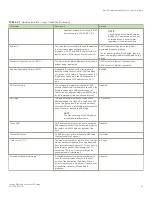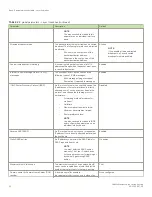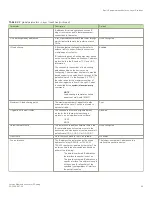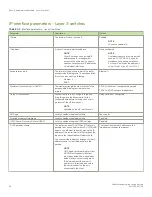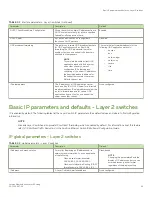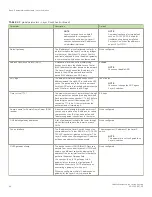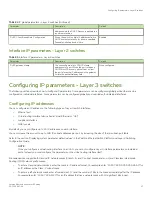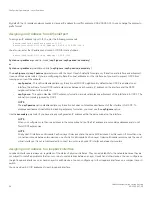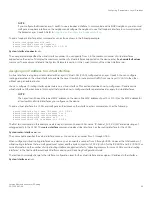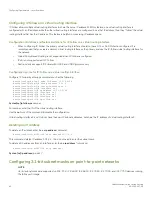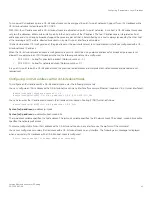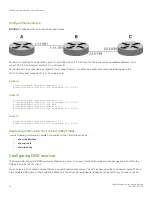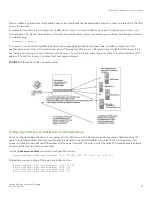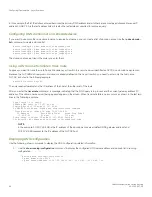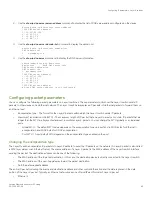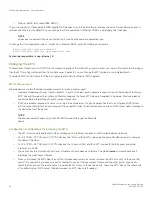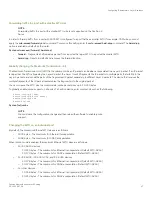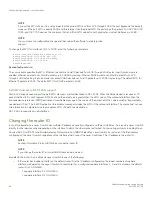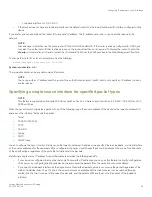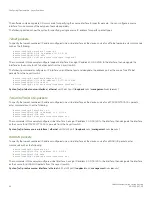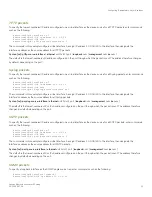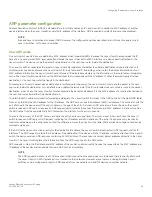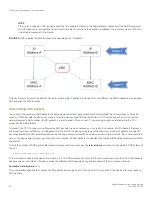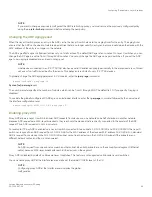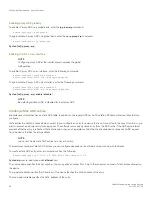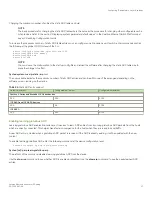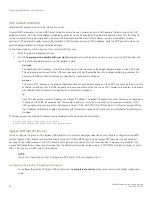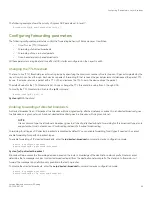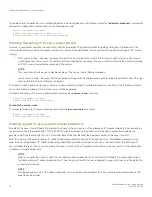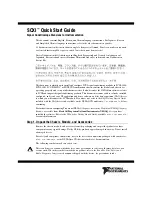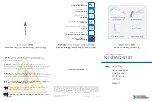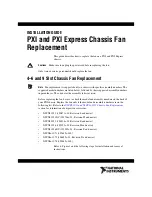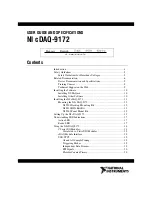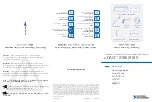
2. Use the
show ip dns-server server-address
command to display the list of DNS server address configured on the device.
device# show ip dns-server server-address
IPV4 DNS server address:
1. 10.157.22.199
2. 10.96.7.15
3. 10.95.7.25
4. 10.98.7.15
3. Use the
show ip dns-server domain-list
command to display the domain list.
device# show ip dns-server domain-list
DNS Domain-list
1 mycompany.com
4. Use the
show ip dns-server
command to display the DNS server information.
switch(mode)# show ip dns-server
dns-server Show DNS Server info
DNS Server information
DNS Domain-list
1 mycompany.com
IPV4 DNS server address:
1. 10.157.22.199
2. 10.96.7.15
3. 10.95.7.25
4. 10.98.7.15
IPV6 DNS server address:
NO ipv6 DNS server address is not configured
Configuring packet parameters
You can configure the following packet parameters on Layer 3 switches. These parameters control how the Layer 3 switch sends IP
packets to other devices on an Ethernet network. The Layer 3 switch always places IP packets into Ethernet packets to forward them on
an Ethernet port.
•
Encapsulation type - The format for the Layer 2 packets within which the Layer 3 switch sends IP packets.
•
Maximum Transmission Unit (MTU) - The maximum length of IP packet that a Layer 2 packet can contain. IP packets that are
longer than the MTU are fragmented and sent in multiple Layer 2 packets. You can change the MTU globally or an individual
ports:
–
Global MTU - The default MTU value depends on the encapsulation type on a port and is 1500 bytes for Ethernet II
encapsulation and 1492 bytes for SNAP encapsulation.
–
Port MTU - A port default MTU depends on the encapsulation type enabled on the port.
Changing the encapsulation type
The Layer 3 switch encapsulates IP packets into Layer 2 packets, to send the IP packets on the network. (A Layer 2 packet is also called
a MAC layer packet or an Ethernet frame.) The source address of a Layer 2 packet is the MAC address of the Layer 3 switch interface
sending the packet. The destination address can be one of the following:
•
The MAC address of the IP packet destination. In this case, the destination device is directly connected to the Layer 3 switch.
•
The MAC address of the next-hop gateway toward the packet destination.
•
An Ethernet broadcast address.
The entire IP packet, including the source and destination address and other control information and the data, is placed in the data
portion of the Layer 2 packet. Typically, an Ethernet network uses one of two different formats of Layer 2 packet:
•
Ethernet II
Configuring IP parameters - Layer 3 switches
FastIron Ethernet Switch Layer 3 Routing
53-1003627-04
45
Summary of Contents for FastIron SX 1600
Page 2: ...FastIron Ethernet Switch Layer 3 Routing 2 53 1003627 04 ...
Page 16: ...FastIron Ethernet Switch Layer 3 Routing 16 53 1003627 04 ...
Page 20: ...FastIron Ethernet Switch Layer 3 Routing 20 53 1003627 04 ...
Page 142: ...FastIron Ethernet Switch Layer 3 Routing 142 53 1003627 04 ...
Page 150: ...FastIron Ethernet Switch Layer 3 Routing 150 53 1003627 04 ...
Page 200: ...FastIron Ethernet Switch Layer 3 Routing 200 53 1003627 04 ...
Page 214: ...FastIron Ethernet Switch Layer 3 Routing 214 53 1003627 04 ...
Page 350: ...FastIron Ethernet Switch Layer 3 Routing 350 53 1003627 04 ...
Page 476: ...FastIron Ethernet Switch Layer 3 Routing 476 53 1003627 04 ...
Page 588: ...FastIron Ethernet Switch Layer 3 Routing 588 53 1003627 04 ...

